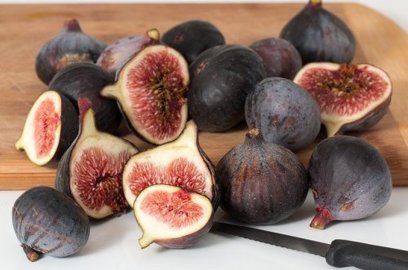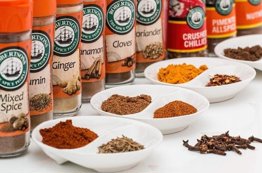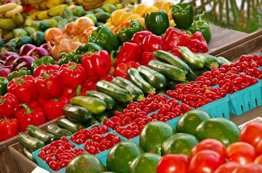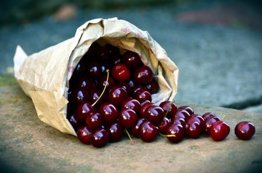Shemitah, Chapter 5: Determining Stage of Growth for Shemitah Sanctity

Perennials and annuals growing during the sixth year, shemitah, or the eight year—what is the stage of growth that determines whether they have shemitah sanctity? Definitions and classifications. What about fragrant flowers?
A. Halachic principles
- The date that determines whether crops belong to the shemitah year is Rosh Hashanah.[1] The laws of shemitah do not apply to most crops that belong to the sixth year, even if harvested during the shemitah[2] However, these rules do apply to vegetables and etrogim that grew during the sixth year and were harvested during the shemitah year.
- The laws of shemitah apply to crops that belong to the shemitah year even during the eighth year (the year following shemitah).[3]
- The stage of growth that determines shemitah sanctity for various crops depends on their halachic classification:
- Fruits
- Vegetables
- Grains and legumes
B. Determining stage of growth for fruit
The determining stage of growth for various types of fruits vis-à-vis shemitah sanctity is chanatah, the beginning of the fruit's formation.[4] For chanatah and bi'ur times for various fruits, see Appendix A.
C. Determining stage of growth for vegetables and annuals
- The determining stage of growth for vegetables is harvest.[5]
- The determining stage of growth for grains and legumes is when they reach a third of their growth (for grains, this stage generally coincides with the soft dough stage).[6]
- "Grains and legumes" include all annual crops where the main part eaten is its seeds,[7] such as: corn, hummus, sunflowers, caraway, and peanuts. This is not necessarily identical to their botanic definition.
- Summer crops (vegetables) such as onions for seeds, paprika, and pumpkins are often left on the ground for drying or convenience. If such crops were no longer irrigated before Rosh Hashanah of the shemitah year, they belong to the sixth year—even if they were harvested during the shemitah This is provided that they did not continue growing after Rosh Hashanah.[8]
- Watermelons grown for their seeds follow the final stage of seed growth, if the watermelons rotted before Rosh Hashanah.[9]
- Vegetables have shemitah sanctity even during the eighth year (if they are not prohibited due to sefichin), unless it is clear that most of the growth of a particular type of vegetable occurs after the onset of This is only when the vegetables began growing during the shemitah year. If they were planted during the eighth year, they are not sacred.[10] For the shemitah sanctity calendar for vegetables, see Appendix C.
- There are certain types of plants whose classification as plant or tree is disputed among the posekim, such as passionfruit, papaya, babaco, goji berry, and golden berry. Since there is a halachic doubt regarding these plants, it is possible to be lenient and treat them as having shemitah sanctity at the beginning of the shemitah year only if they reach the stage of chanatah at this time, and not onat hama'aserot (since chanatah precedes onat hama'aserot, if chanatah occurs in the sixth year and onat hama'aserot in the seventh, the fruit would not have sacred shemitah status).
Furthermore, we can be lenient at the end of the shemitah year and follow onat hama'aserot and not chanatah (so if chanatah occurred in the seventh year and onat hama'aserot in the eighth, the fruit would not have shemitah status either).[11]
D. Determining stage of growth for branches and flowers
- Branches and flowers on annual bushes, or on non-woody perennial bushes that are grown for their fragrance or herbs, follow the laws of vegetables. For this reason, the determining stage is harvest.[12]
- Perennial bushes are halachically treated as trees.
- For fragrant flowers that grow on such bushes, the determining stage is the appearance of the bud.[13]
Fragrant branches and herbs on perennial bushes have shemitah sanctity from the beginning of the branch's formation. It is generally possible to discern young branches from mature branches, especially from spring and on. The older branches belong to the sixth year while the younger branches belong to the shemitah year. For the shemitah sanctity calendar for her
[1] Rambam 4:9; Shabbat Ha'aretz 4:9 §4, 4:13 §1. However, according to the Shelah (Sha'ar Ha'otiyot, letter kuf [[ק §144), the determining date for fruit is 15 Shevat (Tu Bishevat).
[2] Rambam, ibid.
[3] Rambam 4:13.
[4] Tosafot, Rosh Hashanah 12b, s.v. hatevu'ah. However, according to Rambam (4:9,13), the determining stage is onat hama'aserot (and not chanatah); this is the ruling of the Shulchan Aruch, YD §331:125 dealing with terumot and ma'aserot. There are several opinions on how to define onat hama'aserot: (1) when the fruit is edible in extenuating circumstances, (2) when the fruit's seeds can be used to plant new trees, or (3) when the seeds grow in the fruit. In any event, chanatah is the stage preceding onat hama'aserot. For more on the definition of onat hama'aserot and the basic dispute of Tosafot and Rambam, see Shabbat Ha'aretz 4:9 §1–2.
For etrogim we are stringent according to both opinions (chanatah and harvest). See Rambam 4:12, and ibid., Ma'aser Sheni 1:5; Betzet Hashanah, p. 44, s.v. etrogim, p. 57 §6. If one of the two stages occur during shemitah, we handle the etrog with shemitah sanctity but also separate terumot and ma'aserot. Yet, since there is a doubt, we tithe without a blessing. All other citrus fruits follow the laws of all other types of fruit trees. See Rabbi Kook, qtd. in Sefer Hashemitah, p. 11 and n. 5; Shabbat Ha'aretz 4:12 §9.
[5] However, according to the Tosafot (Rosh Hashanah 13b, s.v. achar), for vegetables we follow the completion of their development, not harvest. See Shabbat Ha'aretz 4:12 §2. On the status of onions, see Shabbat Ha'aretz 4:20–21; 4:7, n. 17; 4:6, n. 6a. Pumpkin and watermelon seeds are considered vegetables (and not legumes), since the main part eaten is the fruit and not the seeds. Peas in a pod are considered vegetables. See Hilchot Shevi'it §3, Kise David §75.
[6] See Rambam 4:9. On the various opinions as to the definitions of shelish ("one-third": one-third of the fruit's weight, size, or ripeness) and onat hama'aserot, and the relationship between them vis-à-vis grains and legumes, see Shabbat Ha'aretz 4:9 §1–3; 4:11 §1–2. Rabbi Yisraeli is uncertain: perhaps the determining stage for legumes is when the fruit completes its formation (and not one-third), based on Rashi, Rosh Hashanah 13–14. See "Shemitah sanctity for peanuts and sunflower seeds," HaTorah VeHa'aretz III, p. 110–114.
[7] Rambam, Hilchot Kila'im 1:8; Shulchan Aruch, YD §297:3; Chazon Ish §27:7, s.v. וא"כ. Vegetables are annual plants with inedible seeds, as opposed to legumes where the seed is the part of the plant that is eaten. For additional definitions on vegetables vs. legumes, see Shabbat Ha'aretz 4:12 §1.
[8] That is, following the completion of the fruit's formation and not its harvest, despite the fact that they are vegetables. Based on Rashi, Rosh Hashanah 14a, s.v. ika. For the various opinions on this topic, see Shabbat Ha'aretz 4:17 §1, and n. 5.
[9] According to Rambam 4:14,18.
[10] Chazon Ish §9:13, s.v. פ"ו. See also Shabbat Ha'aretz 4:6 §1b, 4:7.
[11] According to the guidelines of Rabbi Ariel.
[12] This is the ruling of Rabbi Eliahu (based on Magen Avraham, OC §216:9 and Ben Ish Chai, Year 1, Va'etchanan §5 who maintains that plants with hard stalks are considered trees with regard to blessings over fragrances).
[13] A phenomenon that parallels chanatah for fruit trees; see Betzet Hashanah, p. 48, §3, nn. 5, 27.




